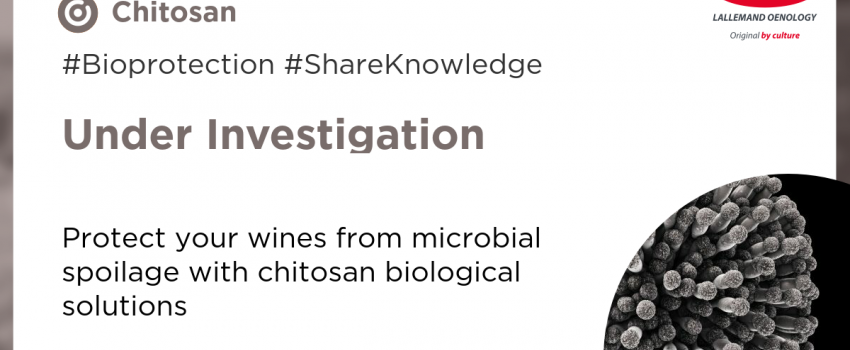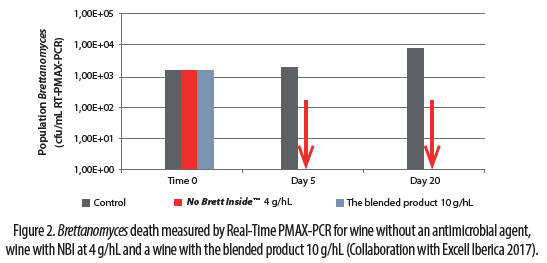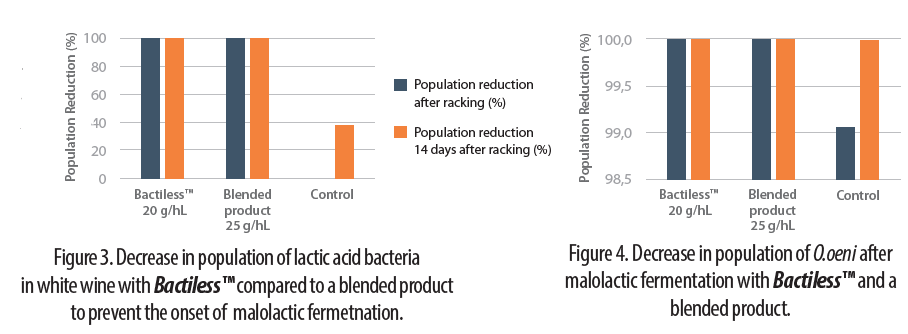
Biological solution to control contaminants in wine
Publiée le 07/05/2021 16:49Managing the risk associated with microbial spoilage is a key point throughout the life of a wine.
SO₂ is the commonly used product to limit microbial contaminants, especially Brettanomyces and undesirable lactic and acetic bacteria, although the market is looking for wines with lower contents. Pure chitosan and chitosan associated with chitin-glucan are biological alternatives of great interest.
Our latest Under Investigation issue focuses on the mode of action and efficiency of these biological solutions against contaminants to preserve your wine quality from sensory deviations.

WHAT ARE CHITOSAN AND CHITIN-GLUCAN?
The only approved chitosan and chitin-glucan in the wine industry are the ones obtained from the mycelium of Aspergillus niger. In the first place, chitin and chitin-glucan are extracted from Aspergillus niger, and chitosan is derived from chitin via deacetylation.
In collaboration with our partner Kitozyme since 2003, we have been screening and selecting the best raw materials as pure compounds based on the physico-chemical diversity of the chitosans and chitin-glucans.
Pure chitosan combined with a specific chitin-glucan act synergistically.
Chitosan plays the antimicrobial role and the chitin-glucan part helps to maximize the physical effect.
The antibacterial and antifungal properties of our chitosan-based formulas (No Brett Inside™ Bactiless™) have been extensively studied and their antimicrobial efficient action has been proven: strong inhibition of Brettanomyces (especially for No Brett Inside™) and acetic and undesirable lactic acid bacteria (especially for Bactiless™).
THE EFFICIENCY OF THE PURE FORMS OF CHITOSAN AND CHITIN-GLUCAN
Brettanomyces constitutes a permanent threat to the quality of wines due to the production of volatile phenols which denature the sensory purity of the wine. These alteration yeasts can develop in harsh environments at any time during the life of a wine, but particularly during the aging phase and some strains of this contaminants are resistant to SO₂.
Our R&D group decided to compare our pure chitosan (No Brett Inside™) or our chitosan combined with chitin-glucan product (Bactiless™) to another chitosan-based product.
- No Brett Inside™, with 100% Aspergillus niger pure chitosan, is as quick and efficient as the other product, but at a much lower dosage already 5 days after addition (figure2).

- Bactiless™, has been shown to reliably decrease the population of undesirable lactic and acetic acid bacteria in white and rosé wines, in sparkling base wine, Cognac or spirit application, or has been used to delay or avoid malolactic fermentation.
In terms of anti-bacterial action Bactiless™ managed to stop the malolactic fermentation and exhibited the same performance as the other product at a lower dosage, due to its highest purity (figure 3).
When microbial stability is required after malolactic fermentation, Bactiless™ showed its ability to reduce the numbers of lactic acid bacteria, with less concentration compared to the other blended product (figure 4).
CONCLUSION
No Brett Inside™ and Bactiless™ are biological solutions 100% natural, biodegradable, non-GMO and non-allergenic to preserve your wine quality by reducing the microbial spoilage risk.
As both our solutions are more concentrated and with a higher chitosan purity than other available products on the market, a lower dosage is needed for a very good efficiency. Uniquely formulated from 100% Aspergillus niger with the purest, certified and OIV-approved form of chitosan, they can be a part of a strategy to reduce the use of SO₂ in wines.
Read all about the mode of actions and effectiveness of these safe and effective biological alternatives against spoilage contaminants in our latest Under Investigation Issue:
https://www.lallemandwine.com/wp-content/uploads/2021/05/UI-Chitosan.pdf


